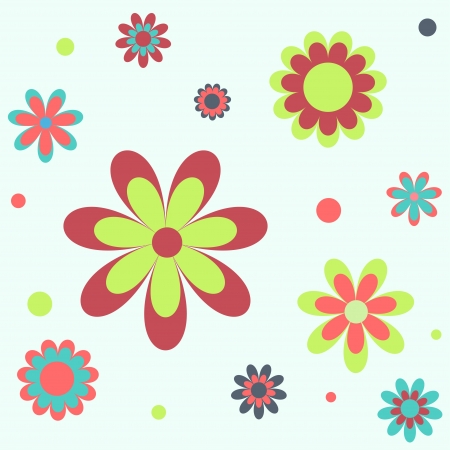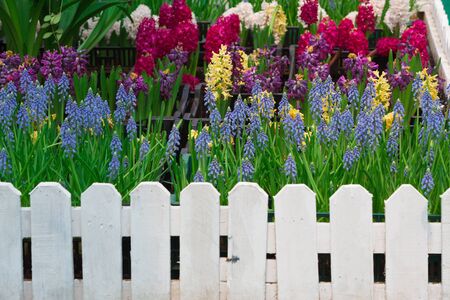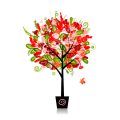Understanding the Importance of Bees
Bees are much more than just buzzing backyard visitors—they are essential pollinators that play a critical role in American ecosystems. As they travel from flower to flower in search of nectar, bees help plants reproduce by transferring pollen. This simple act supports the growth of wildflowers and food crops alike, making bees vital to both natural landscapes and our agricultural systems. In fact, over one-third of the food we enjoy in the United States depends on pollinators like bees, including favorites such as apples, blueberries, almonds, and pumpkins. By supporting bee populations through thoughtful garden design, we also contribute to healthier local food systems and biodiversity. Creating a wildflower garden isn’t just about beautifying your space—it’s an eco-friendly action that strengthens the foundation of our environment and ensures future generations can enjoy America’s rich natural heritage.
Choosing Native Wildflowers for Your Region
When creating a wildflower garden that supports bee populations, choosing native wildflowers is crucial. Native species are adapted to local climates and soil conditions, making them more resilient and better suited to provide food and habitat for native bees. In the United States, diverse climate zones—from the Pacific Northwest to the Southeast—mean that your wildflower choices should reflect your specific region.
Why Native Matters
Native wildflowers have co-evolved with local pollinators, offering nectar and pollen that best meet their needs. By planting native varieties, you help sustain not only bees but also butterflies, birds, and other wildlife. Plus, native plants typically require less water and fewer chemical inputs, supporting both sustainability and biodiversity in your backyard.
Identifying Your Climate Zone
The USDA Plant Hardiness Zone Map divides the U.S. into zones based on average annual minimum winter temperatures. Knowing your zone helps you select wildflowers that will thrive in your local environment. You can easily find your zone by entering your zip code on the USDA website or checking regional gardening resources.
Recommended Native Wildflowers by Region
| Region | USDA Zones | Sample Native Wildflowers |
|---|---|---|
| Northeast | 3-7 | Black-eyed Susan, Purple Coneflower, New England Aster |
| Southeast | 6-9 | Coreopsis, Bee Balm, Blanket Flower |
| Midwest | 3-7 | Purple Prairie Clover, Wild Bergamot, Butterfly Milkweed |
| Southwest | 5-10 | Desert Marigold, Blue Flax, Indian Blanket |
| Pacific Northwest | 6-9 | Lupine, Oregon Sunshine, Yarrow |
| California & West Coast | 7-10 | California Poppy, Tidy Tips, Baby Blue Eyes |
| Mountain West & Rockies | 3-8 | Rocky Mountain Penstemon, Blanket Flower, Fireweed |
Sourcing Native Seeds Responsibly
Whenever possible, source seeds from reputable local nurseries or native plant societies. This reduces the risk of introducing invasive species and ensures genetic diversity adapted to your area’s unique conditions.
The Sustainable Choice for Pollinators and Planet
Selecting native wildflowers not only supports healthy bee populations but also contributes to a resilient ecosystem. By embracing plants suited to your American region, you foster biodiversity while minimizing resource use—a win-win for pollinators and the planet alike.

3. Planning and Preparing Your Wildflower Garden Space
Before you plant your first wildflower seed, it’s crucial to thoughtfully plan your garden space for both bee health and long-term sustainability. Whether you have a spacious suburban yard or a compact urban plot, smart site selection and preparation are key to a thriving pollinator paradise.
Choosing the Right Spot
Start by identifying a sunny location—most native wildflowers and bees love at least six hours of sunlight each day. If you’re working with an urban balcony or rooftop, use containers or raised beds that get plenty of direct sun. Avoid spots that are frequently treated with chemical pesticides or herbicides; these can harm bee populations and disrupt their habitat.
Soil Preparation for Sustainability
Healthy soil is the backbone of any successful wildflower garden. Test your soil’s pH and nutrient levels with a simple home kit, available at most U.S. garden centers. Most native wildflowers thrive in slightly acidic to neutral soils (pH 6-7). Instead of synthetic fertilizers, enrich your soil with compost or aged manure to boost fertility while supporting beneficial microbes—an eco-friendly choice that benefits pollinators, too.
Eco-Friendly Groundwork
Suppress existing turf grass and weeds by layering cardboard or newspaper topped with organic mulch—a process called sheet mulching. This technique not only recycles paper waste but also prevents future weed growth without chemical herbicides. If you’re gardening in an urban space, choose untreated potting mixes and avoid plastic liners to minimize environmental impact.
Sustainable Watering Practices
Wildflowers are generally drought-tolerant once established, making them ideal for American regions facing water restrictions. During establishment, use rain barrels or drip irrigation systems to minimize water waste. Mulch around young plants to conserve moisture and regulate soil temperature—a simple act that reduces runoff and supports healthy root systems.
By planning your wildflower garden with care and using sustainable gardening practices tailored to your local conditions, you’ll create a pollinator-friendly oasis that thrives season after season—nurturing bees while treading lightly on the earth.
4. Sowing Seeds and Sustainable Care Methods
Creating a thriving wildflower garden for bees means embracing eco-friendly gardening from the ground up. Start by scattering native wildflower seeds in early spring or fall, depending on your region’s climate. Opt for a “no-till” approach to minimize soil disturbance—this not only preserves beneficial soil microbes but also helps retain moisture and organic matter vital for seed germination.
Eco-Friendly Planting Techniques
Using sustainable planting techniques goes beyond just avoiding chemicals. Group similar species together to mimic natural ecosystems, encourage pollinator visitation, and reduce competition for resources. Mulch with organic materials like shredded leaves or straw to suppress weeds and maintain soil health. Avoid using plastic weed barriers that can harm soil organisms and contribute to landfill waste.
Smart Watering Strategies
Wildflowers are generally drought-tolerant once established, but young seedlings need consistent moisture. Implement a mindful watering routine—water deeply but less frequently to promote strong root systems. Consider installing a rain barrel to harvest water naturally, reducing your dependence on municipal supplies. Here’s a quick comparison of watering options:
| Method | Eco Impact | Best Use |
|---|---|---|
| Rain Barrel | Reduces runoff, saves water | Watering during dry spells |
| Soaker Hose | Minimizes evaporation | Direct-to-root irrigation |
| Sprinkler System | Higher water use, more runoff | Large areas (less sustainable) |
Pesticide-Free Care
The heart of supporting bee populations is keeping your wildflower patch free from synthetic pesticides and herbicides. These chemicals can be devastating to pollinators and beneficial insects alike. Instead, focus on fostering biodiversity—encourage natural predators like ladybugs and birds to help keep pests in check. If you must intervene, opt for organic solutions such as neem oil or insecticidal soap, applied sparingly and only when absolutely necessary.
Sustainable Maintenance Tips
- Mow paths or borders sparingly to allow wildflowers to reseed naturally.
- Leave some plant debris through winter to shelter overwintering bees and insects.
- Rotate planting areas each year if possible, which prevents disease build-up and supports healthy soils.
Cultivating Resilience for Bees
Your commitment to sustainable practices doesn’t just benefit the bees—it creates a resilient ecosystem where wildflowers, pollinators, and people thrive in harmony. By combining eco-conscious planting, smart water use, and chemical-free care, you’re ensuring your wildflower garden becomes a long-term sanctuary for America’s essential bee populations.
5. Creating Bee-Friendly Features and Habitats
To truly support local bee populations, your wildflower garden should go beyond just planting flowers. Incorporating bee-friendly features and habitats can make a significant difference in attracting and sustaining native pollinators. Start by adding bee houses—these cozy shelters mimic the natural nesting sites that solitary bees love. You can create them using recycled wood, bamboo, or even repurposed tin cans, giving new life to materials that might otherwise end up in landfills.
Providing a clean and reliable water source is another crucial step. Bees need water not only for drinking but also for cooling their hives and feeding their young. Place shallow dishes or birdbaths with stones or marbles in your garden, allowing bees to land safely while they sip. Whenever possible, opt for second-hand containers or upcycle household items as creative watering stations.
Shelter from wind, rain, and predators is essential for thriving pollinator populations. Incorporate brush piles made from fallen branches, logs, or leaf litter to create natural hiding spots and overwintering sites. Not only do these features use what’s already available in your yard, but they also boost overall biodiversity by providing refuge for other beneficial insects and wildlife.
By using recycled or upcycled materials throughout your garden design, you’re practicing sustainable gardening that aligns with eco-conscious American values. These thoughtful touches help close the loop on waste while creating a welcoming haven where bees—and the planet—can flourish together.
6. Engaging with Your Community and Spreading Awareness
Creating a wildflower garden that supports bees is just the beginning—amplifying your impact means reaching out and connecting with your community. By sharing your passion for pollinators, you can inspire others to join the movement for bee conservation.
Connect with Local Gardeners
Start by networking with neighbors and local gardening groups. Many American cities and towns have garden clubs, master gardener programs, or online forums where you can exchange seeds, swap sustainable gardening tips, and discuss native wildflowers that thrive in your area. These connections not only help you learn but also foster a sense of collective purpose.
Participate in Pollinator Events
Look for pollinator-friendly events hosted by organizations like the Xerces Society, local botanical gardens, or your state’s extension office. Workshops, plant sales, and pollinator festivals are great opportunities to deepen your knowledge, volunteer for habitat restoration projects, and meet like-minded advocates. These events often offer hands-on activities for all ages—perfect for families looking to get involved in eco-conscious living.
Promote Bee Conservation in Your Neighborhood
Be an ambassador for bees by raising awareness right where you live. You might host a garden tour to showcase your wildflower patch, distribute bee-friendly planting guides, or start a social media campaign using hashtags like #SaveTheBees or #PollinatorGarden. Even small acts—like putting up signs about the importance of pollinators or encouraging schools to plant mini-meadows—can create ripples of change throughout your community.
Together, these efforts not only strengthen bee populations locally but also build a network of environmentally conscious neighbors who are committed to sustainability and biodiversity. By spreading awareness and engaging others, you help ensure that your wildflower garden has a lasting positive impact on both bees and people.


